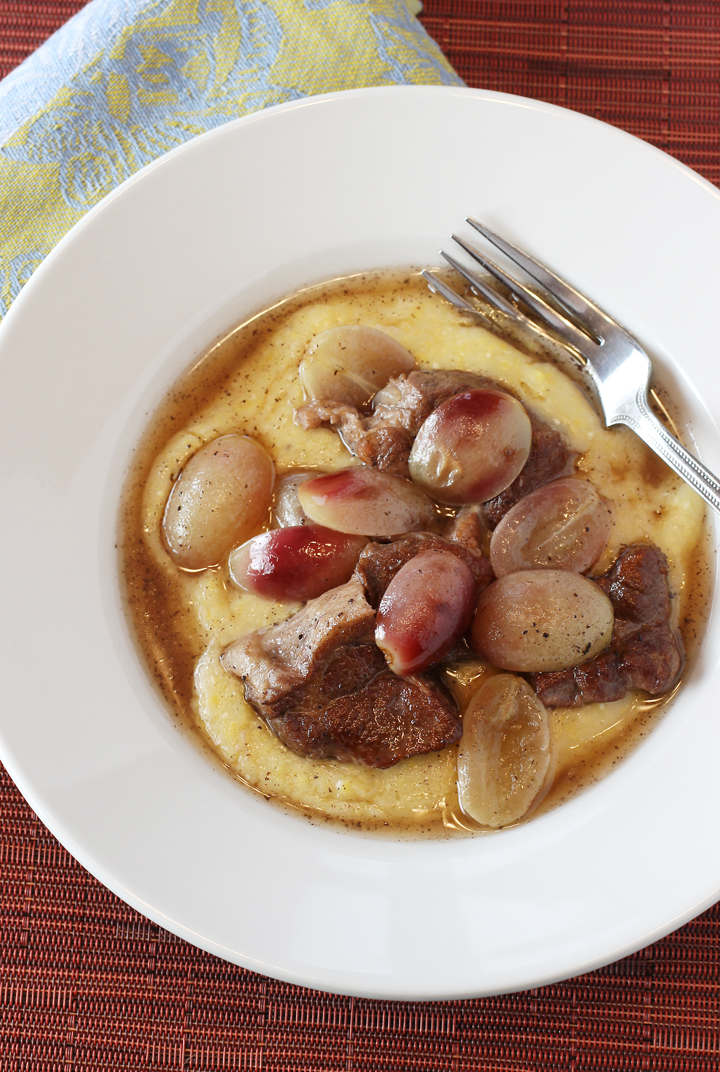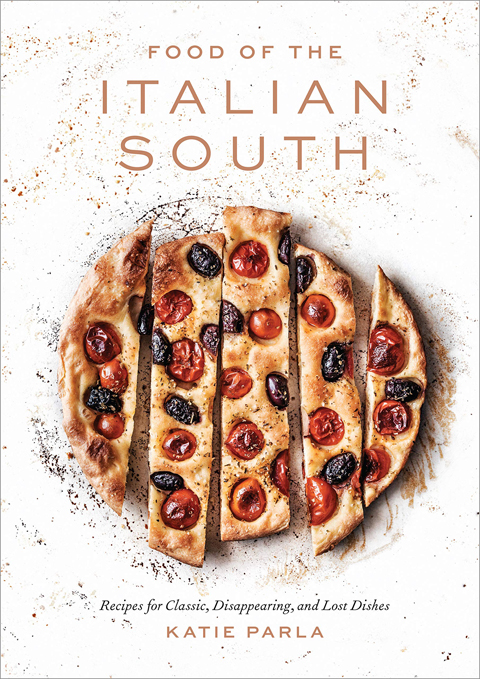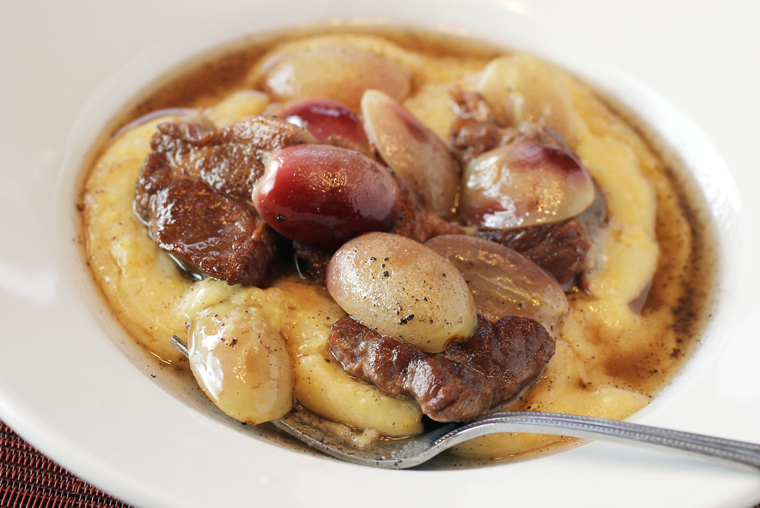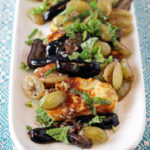Southern Italian Pork with Grapes
Rustic Italian dishes with comforting flavors that speak to the soul.
Ones that are classic — not flashy. And that are in danger of disappearing.
That’s what “Food of the Italian South: Recipes for Classic, Disappearing, and Lost Dishes” (Clarkson Potter) is all about.
The new cookbook, of which I received a review copy, is by Katie Parla, a Rome-based food and wine writer who was a culinary consultant on Season 2 of Netflix’s “Master of None.”
Through 85 recipes, she shines a light on the simple yet satisfying dishes of Basilicata, Calabria, Compania, Molise and Puglia. Take a taste of everything from “Bread Dumplings with Potato and Tomato Broth” and “Orecchiette with Burrata, Tomatoes, and Almond Pesto” to “Egg and Ham Pie” to “Jam Tart with Lard Crust.”
“Pork Cooked with Grapes” (Spezzatino All’Uva) is home-style cooking at its best, a dish of few ingredients that you combine, then let cook on its own, until the pork-fruity flavors marry.
This dish, as Parla writes, comes from the foothills east of the Apennines in Molise, which grow Tintilia, an indigenous red grape. Most of the harvested grapes go into making wine. Some is used for jam. And others go into savory dishes like this one that’s made only at harvest time.
When you make this, you can almost imagine vineyard workers putting a pot of this on the stove, as they finish up their work in the field.
Salt cubes of pork shoulder the night before, then sear in a Dutch oven or large skillet before combining with red wine, bay leaves, garlic, water or pork stock, and grapes. Even using just water, the broth turns out quite porky tasting. The recipe calls for 4 cups broth or water to cover; I ended up needing only about 2 cups.
The recipe also calls for one bunch of red grapes, which of course is pretty variable. I actually counted the ones in my bunch, and they numbered about 50. You can use more or less, however you like.
The broth ends up fairly runny. So if you want it more sauce-like, you can reduce it further on the stove-top after the pork finishes cooking. Or not.
I spooned the pork and grapes over soft polenta. The sweet corn taste was the perfect complement to the fruitiness of the grapes.
It’s a simple, uncomplicated dish that wraps you in warmth like a hug.
Meet the Author: Meet “Food of the Italian South” author Katie Parla at a special dinner event tonight at A16 Rockridge in Oakland. A16’s chef Nicolette Manescalchi will prepare a multi-course dinner with recipes from the cookbook, and owner-sommelier Shelley Lindgren will pair wines from the Italian South. Tickets are $175 per person and includes a copy of the cookbook.
She’ll also be at Enoteca La Storia in San Jose on March 29 for a book-signing and five-course dinner. Tickets are $90 for wine club members; $110 general. Paired wines are an additional cost. And just to whet your appetite, the “Pork Cooked with Grapes” will be one of the dishes served.
Pork Cooked with Grapes (Spezzatino All’Uva)
(Serves 6 to 8)
2 tablespoons extra-virgin olive oil
2 pounds boneless pork shoulder, cut into 2-inch cubes, and salted 24 hours in advance
1 garlic clove, smashed
1 cup dry red wine (such as Aglianico del Vulture)
2 bay leaves
4 cups pork stock or water
1 bunch of red grapes, halved and seeded
Heat the olive oil in a large skillet over medium heat. When the oil begins to shimmer, add the pork, working in batches as needed, and cook, turning, until it is browned on all sides, 7 to 8 minutes. Remove the pork and set aside on a plate.
Reduce the heat to low. Add the garlic and cook until just golden, about 5 minutes. Add the wine, increase the heat to medium, and scrape up any browned bits from the bottom of the pan. When the alcohol aroma dissipates and the liquid has nearly evaporated, about 2 minutes, add the bay leaves.
Return the pork to the pan. Add enough stock so the mat is mostly submerged and season with salt. Cook, stirring occasionally, for 1 1/2 hour more, until the pork is fork-tender. Add the grapes at the 1 1/4 hour mark and continue cooking until they are tender. If the sauce becomes too dry, add a bit more stock (you may not need all the stock). Serve immediately.
From “Food of the Italian South” by Katie Parla
More Grape Recipes: Haloumi with Grapes
And: Minute-Oatmeal Puffs with Anise and Grapes
And: Grape and Vin Santo Cakes









What an interesting dish! Pork combines well with fruit, but I’ve never cooked it with grapes. Fun recipe — wanna try this! Thanks.
Your comment “uncomplicated dish that wraps you in warmth like a hug” is reason alone to try this recipe.
Do you think the pork is covered or not after you add the stock and wine and pork? If you covered, could explain why dish had a lot of thin sauce. Recipe doesn’t say to cover, and I’m cookng now and can’t decide what to do! lol. so I’ve left partially covered. Parla says if sauce is too thick/not sufficient to add to it … duh. confused.
Susan: The recipe doesn’t say to cover the pot while cooking the pork, so I left it uncovered. I also found that the sauce is still pretty thin and brothy after the pork is cooked. So if you like a more viscous sauce, you can continue to simmer the pork in the broth awhile longer. Or you could remove the pork to a platter (before adding the grapes to the pot), and more vigorously boil the sauce until reduced further, then add the grapes and the pork back in.